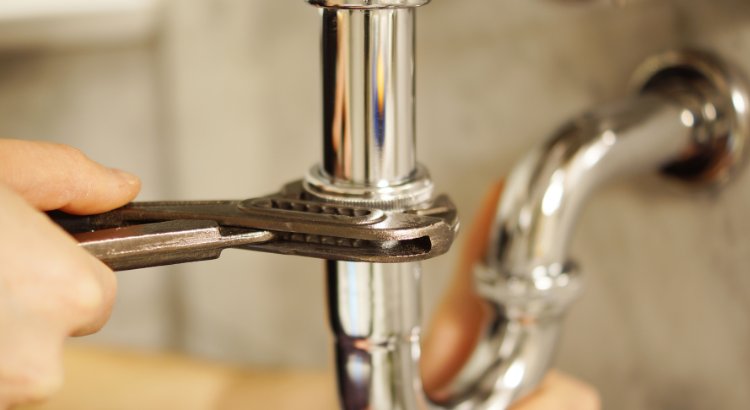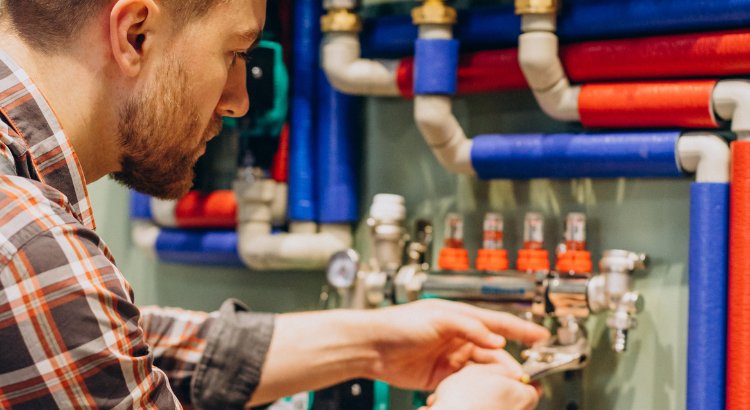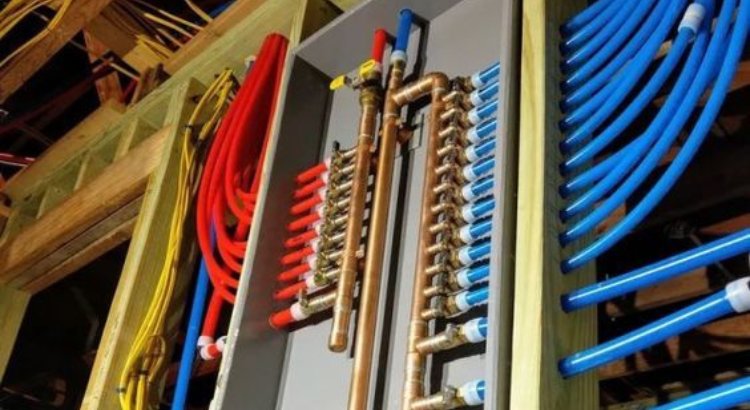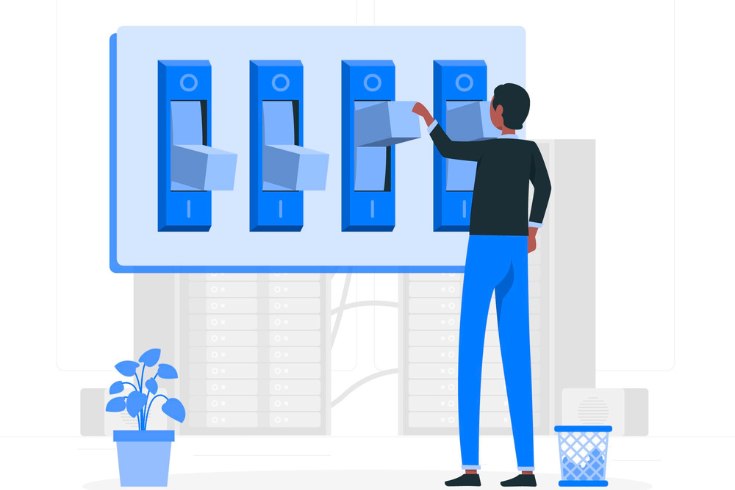Homeowners are becoming more and more worried about the efficiency of their plumbing systems as a result of the expansion of our homes throughout time, which included longer plumbing runs and additional bathrooms.
We discuss manifold plumbing systems in this article and compare their effectiveness to those of traditional plumbing systems.

Traditional vs. Manifold Plumbing Systems: What Differentiates Them?

The impact of the plumbing system in a custom home build or restoration cannot be overstated, even though it may not be the most incredible feature.
The differences between manifold and traditional plumbing systems are discussed in this section, along with important factors to take into consideration when selecting one over the other.
Traditional Plumbing System
A traditional plumbing system has the advantages of being well-known, having plumbing contractors with extensive installation knowledge, and generally being less expensive.
A large-diameter pipe, usually ¾”, circulates around the house and branches into smaller ½” diameter pipes that supply individual fixtures.
However, the inefficiency of traditional plumbing systems’ use of resources and energy is one of their fundamental weaknesses. More hot water is required to reach a distant fixture through the large-diameter pipe than through a smaller ½” diameter pipe.
This creates an equation that works against the homeowner’s ability to conserve energy and water when paired with an inefficient water heating system.
Manifold Plumbing System
A manifold plumbing system uses ½” take-offs near the hot water supply of the house, in contrast to traditional systems. As a result, hot water may now reach each fixture without the need to clear a ¾” diameter pipe.
Manifold systems are not new, but they are more advanced than previous designs, which may result in somewhat higher installation costs. However, the initial outlay is more than offset by the long-term advantages.
In a manifold system, the individual ½” runs require less water and energy because there’s no need to clear out a ¾” diameter line prior to hot water delivery.
Given that this efficiency results in decreased monthly utility bills, manifold systems are a wise choice for households.
Which Is More Effective: A Manifold Plumbing System or a Traditional One?
It has been found that manifold plumbing systems are significantly more efficient than traditional systems. They are a powerful yet understated addition to any custom house or renovation project since they use less water and energy for water heating.
Boost the Efficiency of the Manifold Plumbing System with PEX Tube

PEX tubing is something you should think about using in a manifold plumbing system to maximize its efficiency. PEX tubing is made of high-density polyethylene (HDPE), which makes it flexible, resistant to acid, and less likely to accumulate minerals.
Because of its pliability, it may be bent in rounder shapes instead of the 90-degree corners that traditional plumbing materials need, which lowers water turbulence. This feature ensures a more effective flow across the pipes. Additionally, PEX tubing comes in red and blue, making it simple to differentiate between hot and cold water lines. Its flexibility also makes bundling possible as it passes through the house.
Additionally, PEX tubing comes in red and blue, making it simple to differentiate between hot and cold water lines. Its flexibility also makes bundling possible as it passes through the house.
Pros and Cons of Manifold Plumbing System
Pros
- Enhanced productivity with shorter hot water wait times.
- Personal control for accurate dispersal of water.
- Keeps the water pressure constant even when several fixtures are in use.
- Makes troubleshooting isolated lines easier.
- Possibility of reducing maintenance expenses over time.
- PEX tubing that is versatile can withstand corrosion, and is pliable.
Cons
- Greater initial installation expenses.
- Expertise is needed for intricate installations.
- Peril of excessively complex designs for more basic plumbing configurations.
- Room design may be affected by the need for space.
- Limited hot water flow due to the size of the water heater.
- Reliance on knowledgeable installers to ensure correct setup.
Pros and Cons of Traditional Plumbing System
Pros
- Familiarity, extensive installation expertise, and typically reduced initial expenses.
- A well-known and established system.
- Uniform among contractors doing plumbing work.
- Easier to install with a simpler layout.
- Frequently employed for simpler or smaller plumbing requirements.
- In some situations, it may be quicker and easier to install.
Cons
- Inherent inefficiencies in the use of energy and resources.
- There are longer wait times for hot water when pipelines have a larger diameter.
- Restricted ability to distribute water for each fixture individually.
- Problems may affect the plumbing system as a whole.
- Less focused troubleshooting may result in increased maintenance expenses.
- Possibility of erratic water pressure while using simultaneously.
Conclusion
In conclusion, the difference between manifold and traditional plumbing systems highlights how important plumbing is to the efficiency of a home.
Manifold systems are shown to be greatly more efficient, offering better control and cheaper utility bills, while traditional systems provide familiarity and lower initial expenses. Manifold systems’ efficiency is further increased by the creative use of PEX tubing.
Homeowners can make well-informed decisions based on their unique circumstances by being aware of the pros and cons of each system.
As technology advances, manifold systems become useful and effective additions to modern homes, providing a mix of affordability and cutting-edge usefulness.




